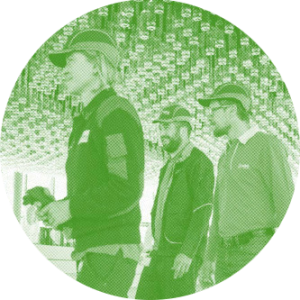
Boa Vista Apartments
NBHA selected Dalkia Aegis to conduct a feasibility study for reducing energy costs with a CHP system, showing that Boa Vista was a good candidate and would save NBHA nearly $400,000 over ten years.
Project History
Boa Vista Apartments is an elderly high-rise housing development, comprised of ninety-nine (99) one-bedroom apartments, a community room with a kitchen, and also the location for the administrative office for the NBHA. The development is owned and operated by the New Bedford Housing Authority (NBHA). Since energy costs are a large portion of its operating budget (40% across all its facilities), NBHA has continually looked for ways to reduce energy expenditures.
Through its energy performance contract with Constellation Energy Services Company, NBHA selected project developer Dalkia Aegis, EDF Group (Holyoke, MA) to conduct a feasibility study for reducing energy costs with a Combined Heat and Power (CHP) system at Boa Vista. The feasibility study showed that Boa Vista was a good candidate for CHP and would save NBHA nearly $400,000 over ten years.
NBHA and Constellation Energy Services contracted with Dalkia Aegis, EDF Group to engineer and install one turnkey 75kW packaged CHP system to provide both electricity and hot water to the multi-unit building. Dalkia Aegis, EDF Group also agreed to apply for an $18,000 rebate from NStar, the Massachusetts-based electric and gas utility, on behalf of the NBHA.
CHP System Description
The CHP system, designed and installed by Dalkia Aegis, EDF Group, consists of one Aegen ThermoPower 75LE Cogeneration Module, which features a natural gas-fired engine supplying 75 kW of electricity. The main electrical distribution panels in the building receive the cogenerated electricity, which is then distributed to meet 52% of the total building load. Electricity from the grid services the remaining load.
The system is supplied with a state-of- the- art Windows-based microprocessor for automatic, unattended and remote monitoring operation by Dalkia Aegis to ensure it is operating properly.
Aegen ThermoPower 75 LE Cogeneration Module

Use of Recovered Heat
Heat contained in the Aegen ThermoPower unit’s engine and engine exhaust is captured through various heat exchangers located in the oil cooler, engine jacket, and exhaust gas manifold heat exchangers. This captured heat is then transferred to Boa Vista’s comfort space and domestic hot water heating loops. The CHP system meets 74% of the building’s total space heating needs and 100% of domestic hot water needs.
Maintenance and Operational History
The Aegen ThermoPower unit was installed and began operation in 2009, and has been running 20+ hours per day. The NBHA contracted with Dalkia Aegis, EDF Group, to maintain the CHP system that includes remote monitoring of the system around the clock. This monitoring allows Dalkia Aegis to detect and correct any disturbances and other system problems before they can impact the savings from the CHP system. Maintenance costs average $5,000 annually.
Costs and Benefits
The initial cost to install the Boa Vista CHP system was $196,900, which includes the rebate from NStar. Overall, Boa Vista will save $34,000 in the first year in energy operating costs (after fuel and maintenance costs), or a 25% reduction in energy costs. These savings steadily increase over the ten-year analysis period. The project is expected to generate a ten-year net operating savings of nearly four hundred thousand dollars with a simple payback of 6.5 years.
Energy Cost and Consumption Comparison-Before and After First Year Cogeneration Operation
| Before | After | Savings (%) | |
|---|---|---|---|
| KWh Purchased | 545,720 | 262,786 | 52% |
| Electricity Cost | $93,072 | $49,190 | 47% |
| Gas Cost | $52,412 | $61407 | —– |
| Total Energy Costs | $145,484 | $110,597 | 24% |
End User Perspectives
Looking to the future, the NBHA has plans to install Dalkia Aegis, EDF Group CHP systems in other multi-family housing developments and provide some of the energy produced to nearby schools and recreational facilities. The NBHA believes that if these cogeneration systems prove to be successful, then this model may be repeated at other authorities.

